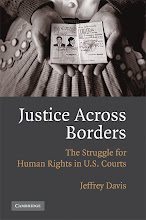Human Trafficking is the illegal movement
of people, typically for the purposes of forced labor or commercial sexual
exploitation. Human trafficking specifically targets the dignity of both men
and women involved and makes the victims feel as though they are not worthy of
respect and basic human rights after all they have been put through. The issue
is that human trafficking is not only a global problem but it is also very
difficult to locate and track because of its hidden manifestations. Due to the
nature of human trafficking and its illicit activity, the results and
unsubstantiated claims of its whereabouts make the information used to expose
it very unreliable at times. The cases of human trafficking can vary widely,
from cases of forced labor, to sexual exploitation, to commercial sexual
exploitation of children in tourism, to even trafficking for tissue, cells, and
organs, among much more. Out of all forms of human trafficking, one consistent
aspect seems to be the abuse of the inherent vulnerability of victims.
It can be hard to track down and
infiltrate the places that hold human trafficking because many times, by the
time the police know the whereabouts of the facility, the pimps have already
moved the victims to another location. Trafficking victims often have contact
with local law enforcement authorities, but because local law enforcement
agents lack sufficient training, they fail to notice the victims or take
appropriate action to bring them to safety. The toll that it takes on the
victims is absolutely unimaginable. Human trafficking is an injustice that I
care genuinely and profoundly about because of how closely I have worked in the
past years with women who were the victims of it. I volunteer with an
organization known as The Samaritan Women, which is a rehab facility for women
who have been the victims of human trafficking. The organization works to get
these women back up on their feet and build them into strong and independent
ladies after their dignity has been shattered by their worst nightmares.
Hearing from dozens of testimonies by these women, it is truly a heinous crime
one could not even dare to describe. One woman I spoke with was locked in a
closet – naked- for almost ten years and never saw daylight. Not only was her
dignity shattered, but also her ability to interact with almost anyone was
traumatizing for her after those years. Women do not know what to do with
themselves after they have been through these events, so for many of them, it
is easier for stay in their situations than to even try and get help.
“Demand reduction” strategies have
been implemented by government and law enforcement to focus on actions that
will reduce sex buying. Localities try demand reduction after attempts to
reduce prostitution have failed, or in response to community calls to do
something. For example, web-based fake profiles, where sex buyers are arrested
after making contact with a decoy “prostitute” who is actually a police
officer. Another example of brothel-based reverse stings, where police close a
brothel, make it look like it is still open, and then arrest sex buyers and
pimps who arrive. But, other remedies must be implemented as well for the
victims to even feel 1% of justice. Trafficking victims are in need of numerous
services, from housing to medical and legal attention. Unlike domestic violence
victims who run from one perpetrator, trafficking victims may be running from a
whole network of organized crime. Overall, they appear to be less stable, have
less knowledge about the criminal justice system, are more isolated, and have
more extreme trauma and mental health needs than most domestic violence
victims.
So what can be done ultimately for
these victims? Well, there are several options. One of these is known as The
Samaritan Women, a program that I personally volunteer with. The Samaritan
Women is a national Christian organization providing restorative care to
survivors, and bringing about an end to domestic human trafficking through
awareness, prevention, and advocacy. It is
geared completely towards the victims of human trafficking, and helps them in
any way possible through five transitional, restorative, and independent phases.
Their remedies include providing them housing at the rehabilitation center,
having them do activities such as planting and house-chores to get their minds
off of their past traumatic events and stabilize them, and even urging them to
pick up habits of personal expression such as cooking and reading so they can
start building their lives once again. But even better, the program helps the
women enroll in classes that actually allow them to ultimately earn a degree,
whether a Bachelor or Masters, and help them find jobs – once they are stable,
so that they are becoming prepared to be independent, accountable, and connected
in a new community.
Other
options include becoming aware and simply looking up programs that help with
human trafficking. For instance, the Blue Heart Campaign which works to raise
awareness of the plight of victims and build political support to fight the
criminals behind trafficking while the United Nations Voluntary Trust Fund for
Victims of Human Trafficking does fundraising to assist grass-roots
organizations working with survivors or this crime. Your responsibility can go
so far as pledging to not purchase goods and services that could be linked
directly or indirectly with sexual exploitation. By becoming aware, involved,
supportive, and responsible, we can help these women obtain the justice they
deserve – their own human dignity.
References:


No comments:
Post a Comment